5 tips for choosing a shoe for the hallway
What does each of us do when he crosses the threshold of a house and ends up in hallway? Of course, removes outerwear and shoes. And if the storage system for things is equipped in almost every hallway, then shoes are often randomly scattered around it. Many believe that even without that small hallway does not fit an additional item of furniture for storing shoes. This is a serious mistake! The random arrangement of shoes makes the room perceive as more tiny and cluttered. Much better choose the right shoe in size and shape. Despite the apparent simplicity of the task, a huge modern choice of these interior items can be confusing. We will deal with the main selection options.
No. 1. What type of shoe to prefer?
All types of shoe racks can be divided into two large groups:
- open;
- closed.
They can be presented in the form of shelves, cabinets or benches, be full-sized or compact. Depending on the combination of these characteristics emit the main types of shoe racks:
- galoshes. In fact, these are open shelves for shoes, but at the same time their design can have both the simplest and the most unusual design, any height. A clear advantage is the ability to put shoes of different sizes, even wet ones, because due to ventilation it dries quickly and does not deteriorate. Minus - all shoes are in plain sight, which some pedantic lovers of order may not like;

- cabinet bona. This is a rather voluminous piece of furniture, inside of which there is a mass of shelves for shoes: they can be located at an angle or be straight. Shoes, boots, boots and other objects rest on the entire sole, so they won’t be deformed. Many manage to put all the shoes in such a closet. Doors can be glass, opaque, deaf, and by design - oar, sliding or accordion, and if the boom is located inside wardrobe, then there will be no doors at all. The cabinet-boom allows to keep accurately all shoes, but not suitable for small hallways. To ventilate the space inside, it is necessary to provide ventilation holes;

- slim shoe their name hints that they occupy a minimum of space. They have a very shallow depth, and the folding shelves open at 45 or 90 degrees, providing convenient access to pairs of shoes that are stored there vertically. Separate compartments or the entire door can recline. These shoe racks are salvation for small halls, because they can even fit outside the door. The downside is the impossibility of storing volumetric shoe outbreaks, but manufacturers today offer slim shoe racks with different compartment sizes, which can be an excellent solution - the main thing is to think ahead of time what shoes will be stored in it. By the way, it’s better to put clean and dry shoes in it;

- cupboard - low storage for shoes, equipped with swing doors. It is possible to store seasonal shoes in it due to its size, and shelves can be different in height, so the location of the boots in it will not cause problems. Shoes should be kept dry and clean, and in small compartments there is a place for shoe care products. Often, such cabinets are equipped with a seat on top to conveniently put on and take off shoes, and can even look like a chest;

- shoebox can to equip in a wardrobeif nothing else fits in the hallway. Shelves for storing shoes can be stationary or extendable, the same height or different, to accommodate only seasonal or all household shoes in general;

- benches. This is something between the pedestals and galoshes. Shoes are stored open on several racks, but the design is equipped with a seat. The design can be anything, thanks to which the shoe rack will turn into a decoration of the hallway.

Designers do not get tired of inventing interesting new options for storing shoes in the hallway. In addition, some options can be spied on the Internet and done independently. Shoe rack, reminiscent of a wine cabinet, will be an unusual addition to the hallway. Women's shoes and sandals can be generally cling to heels for vertical crossbars. If you include the fantasy, you can find a lot of interesting options.
No. 2. What material should the shoebox be made of?
Convenience and durability of the use of this useful part of the hallway interior depends not only on the type of construction, but also on the material of manufacture. Today The most common options are:
- wooden. Beautiful, natural, but massive and expensive. Suitable for spacious hallways made in classic style. They require careful maintenance, but you can’t put dirty wet shoes in such a shoe. Moreover, you have to apply regularly protective impregnationto keep a neat appearance for as long as possible;

- plastic shoe racks are the cheapest, quite practical and durable, but their appearance will not suit everyone. In addition, some specimens are fragile, and scratches remain on them;

- metal. Durable and practical products that are difficult to damage. To protect against corrosion, sometimes it is necessary to update the paint layer. Too thin sheets of metal can deform under the weight of the shoe, and this must be taken into account when choosing;

- glass. Such shoe racks are made of durable glass, which is distinguished by its large weight. The product looks original and weightless, but practicality leaves much to be desired, because any traces of shoes and fingerprints will be clearly visible on the glass, which means that you will have to wash and polish it almost every day to maintain the appearance;

- Chipboard became one of the most popular materials for shoe racks. It is inexpensive, easy to maintain, allows you to create compact and lightweight products, but when wet it can begin to crack or peel;

- wicker the shoe-box will become a nice decoration of the hallway and will perfectly fit into the country style or Provence. This is a lightweight product that provides air access to the shoe and its ventilation.

In this case, all possible options are also not limited to the listed options. In some houses you can find stone shoe - An interesting option that is impossible to buy in the store - it is laid out on the spot.
No. 3. What should be the dimensions of the shoe?
The answer to this question depends on what size is the entrance hall, how many pairs of shoes and what type will be stored in the shoe rack. If you intend to put together all the family shoes, incl. and winter boots, the shoe rack should be quite bulky and voluminous. For storage of seasonal shoes, small shoe racks, for example, such as slim, are suitable. This is a great option for a tiny hallway. You can win due to the depth or height of the product.
The main parameter for the shoe is considered depth. Its standard value is 60-80 cm, but you can find options with a depth of 100-120 cm and even 13-18 cm. The latter can be easily placed behind the opening door and they are suitable when there is no extra space at all, but you can’t put boots in them . Shoe racks with a depth of 40-50 cm are ideal for standard hallways in ordinary apartment buildings. If the height allows, then you can increase the number of storage places for shoes by using higher shelving, cabinets and shelves for shoes. Width depends on how much free space remains in the hallway.
Most of the problems arise when the family consists of 4-5 people, and the entrance hall is very small, and it is not possible to place a huge shoe rack in it, and women's boots will not fit in the narrow one. There is a way out, in this case - shoe rack with different heights and shelf sizes.
Number 4. Shoe Style
Thanks to the huge number of possible materials and decorative elements, you can choose a shoe rack that fits perfectly into any interior the hallway, and even more - will become its highlight.
If the hallway is completed in the style of a classic or baroque, then a great option - natural wood or, in extreme cases, chipboard. High tech and minimalism it is better to supplement with a metal product, and glass shoe racks will fit into the style of avant-garde or fusion. If you decorate a wooden or wicker product with textile inserts, then such a product will become a decoration of the hallway in the Provence style.
No. 5. Interesting ideas for shoes
Shoe makers can be the most non-standard and even done by hand. Wanting to show imagination, one should not forget that the product should be, first of all, comfortable, functional and not spoil the shoes. Perhaps some of these ideas will inspire you to create your own masterpiece:
- old buckets, wicker bags and other items after a small restoration can be used to store shoes, and put them under a bench in the hallway. The option is not for everyone, but it will fit perfectly in some halls;

- a shoe rack may resemble a chest or a shelf on a train. The idea is that outwardly it looks just like a bench for changing shoes, but if you open the lid, a huge place is formed to store a mass of shoes, and even bulky items can be saved in this way;

- owners of two-story houses can use a place for a full volumetric shoe a staircase;

- Do not forget about the boxes and boxes that can be used as storage for shoes. It is only necessary to put them in order a little, and then tastefully place or arrange;

- Custom-made products can be tailored to meet exacting requirements. Some of these shoe racks at first glance do not give out their purpose.

Finally
A shoe rack in the hallway is just as necessary as a refrigerator on the kitchen. Folded in one place shoes are an additional plus to order and cleanliness, convenience for households and guests. A wide variety of modern models in design, dimensions and material of execution will allow everyone to choose the best option, even if the hallway is absolutely tiny.

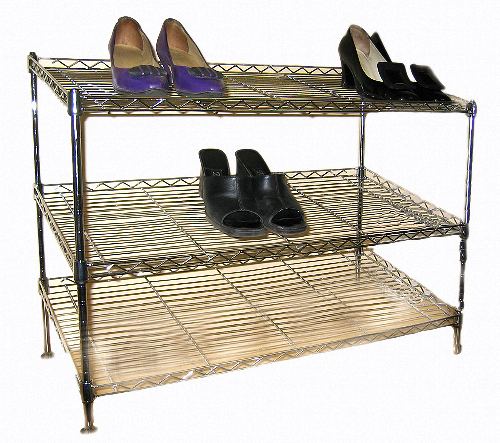
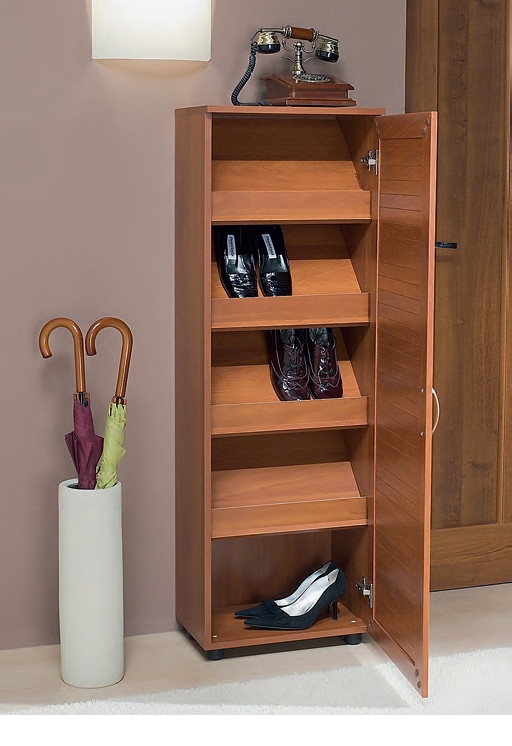
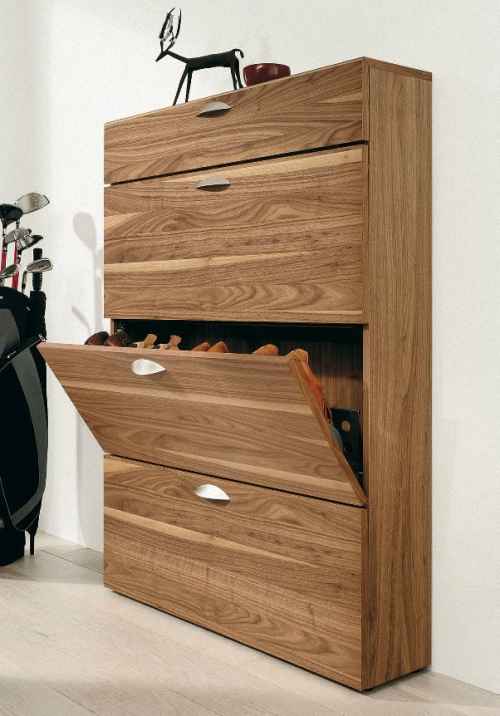
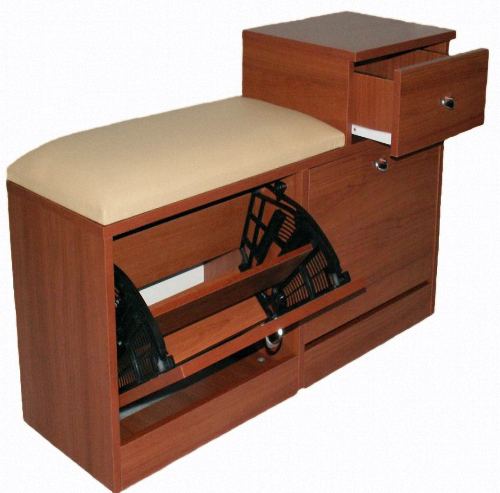


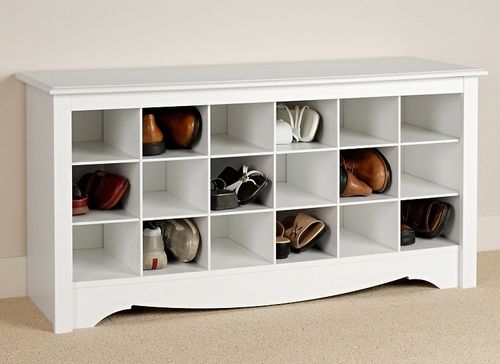
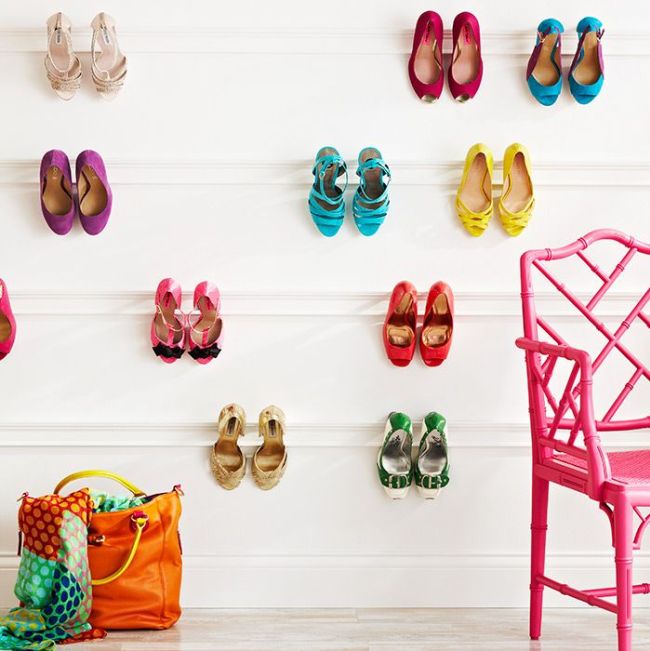
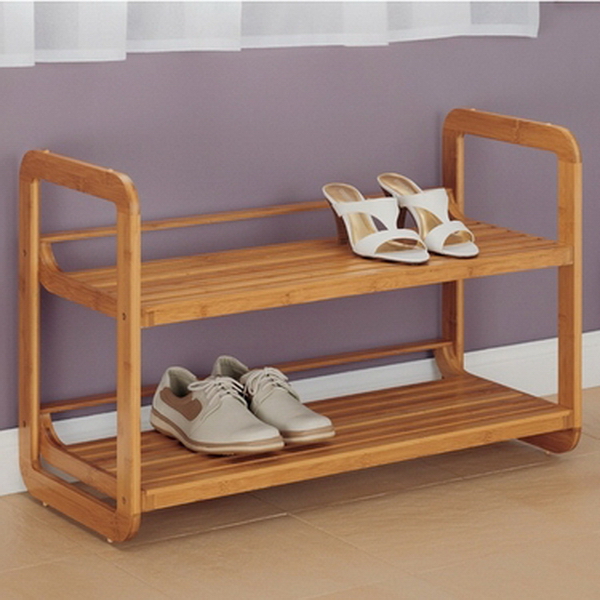
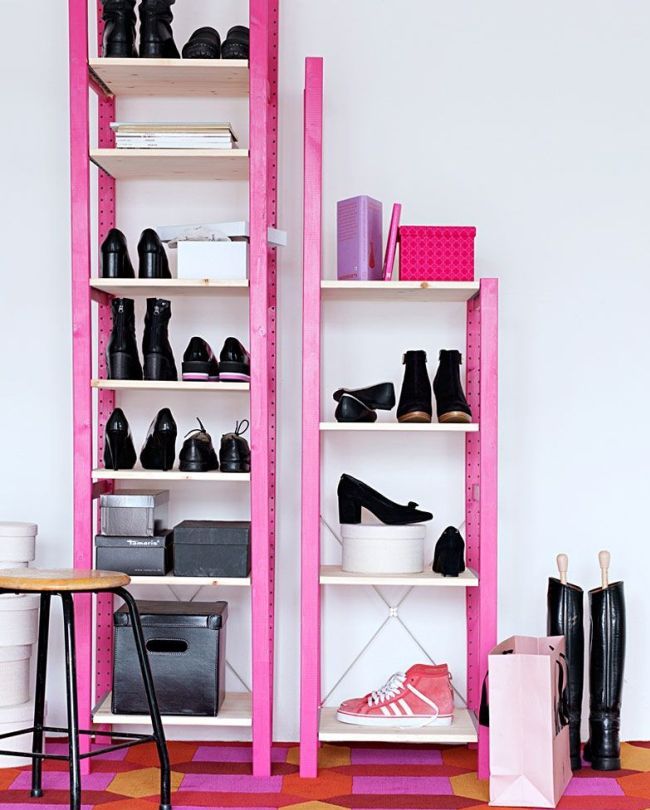
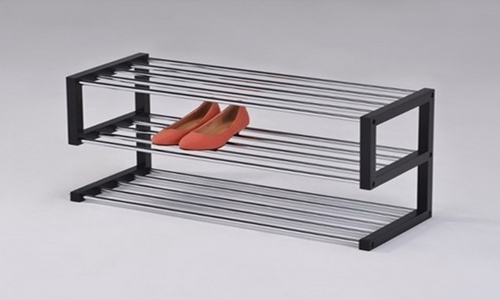
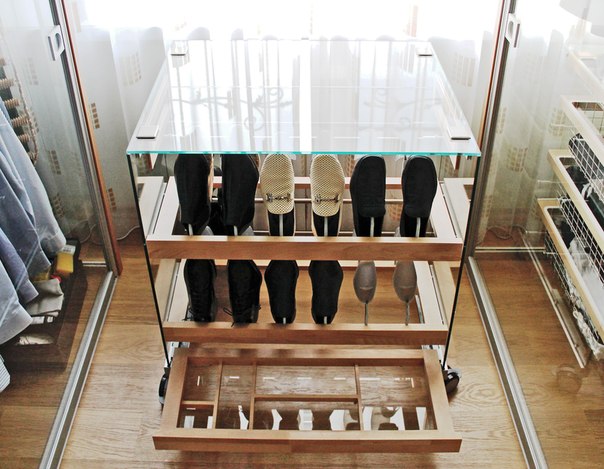
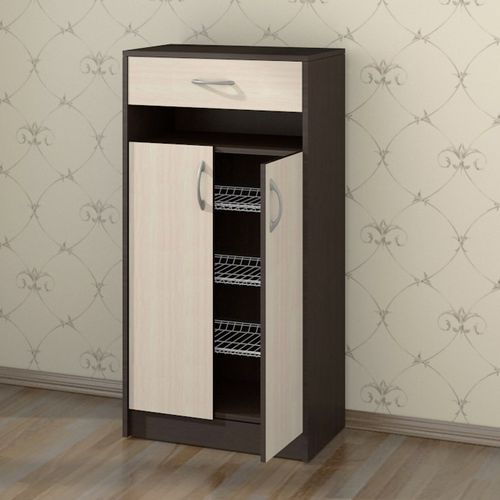
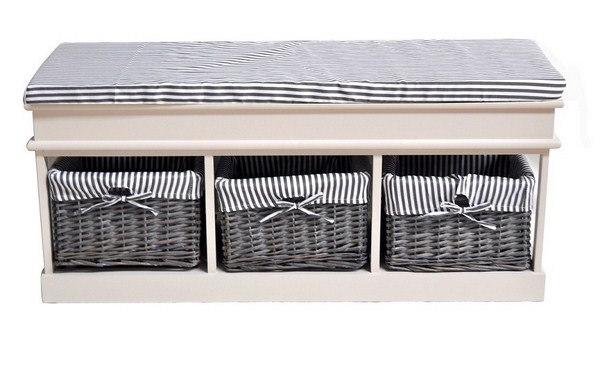
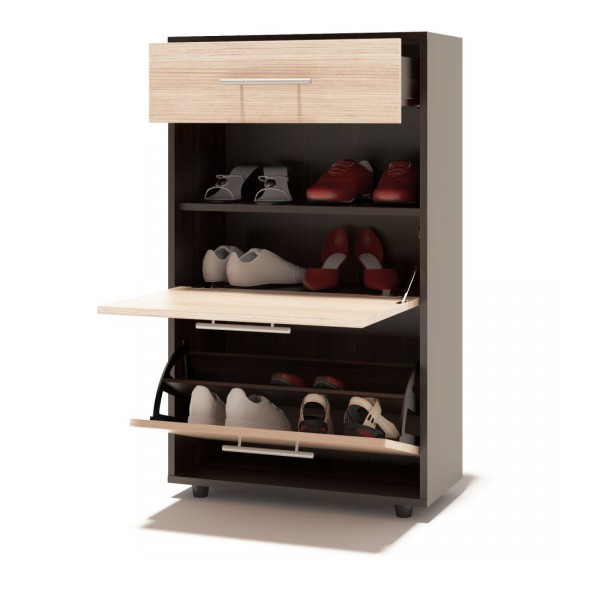
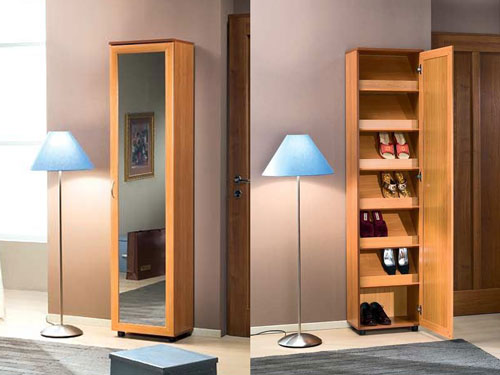
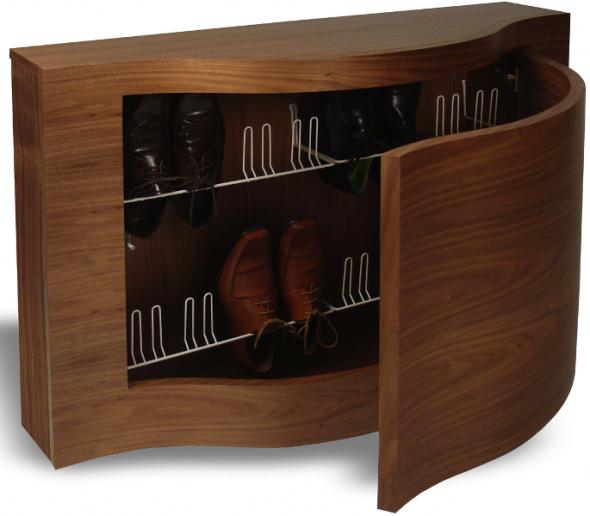
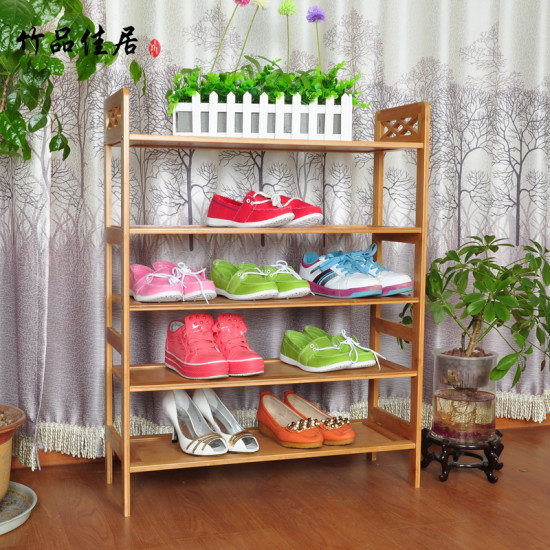
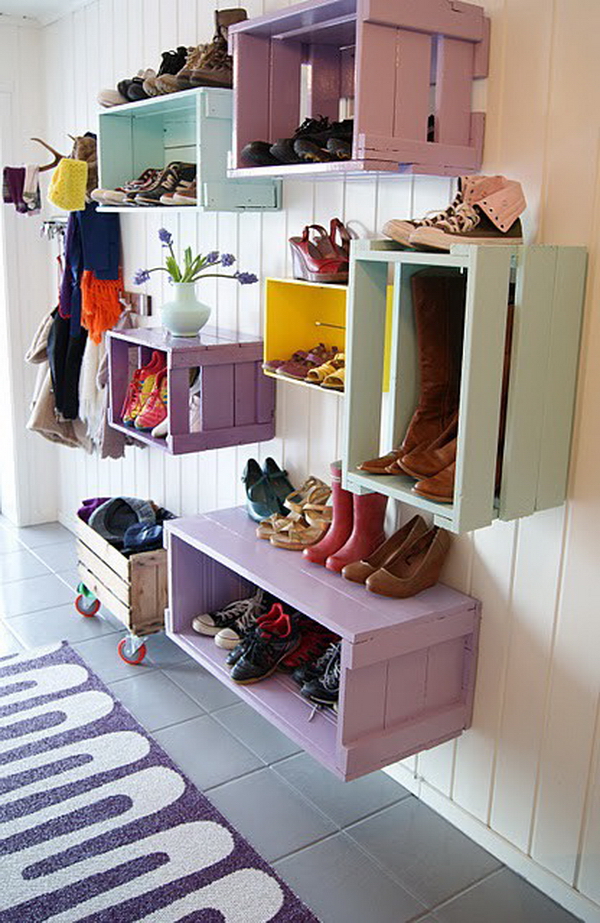
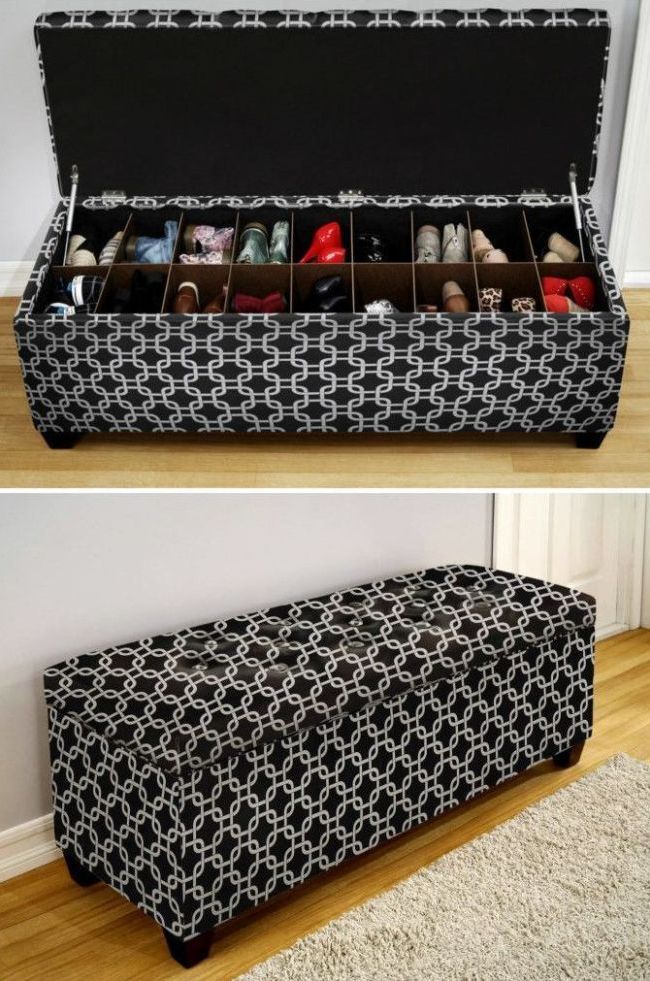
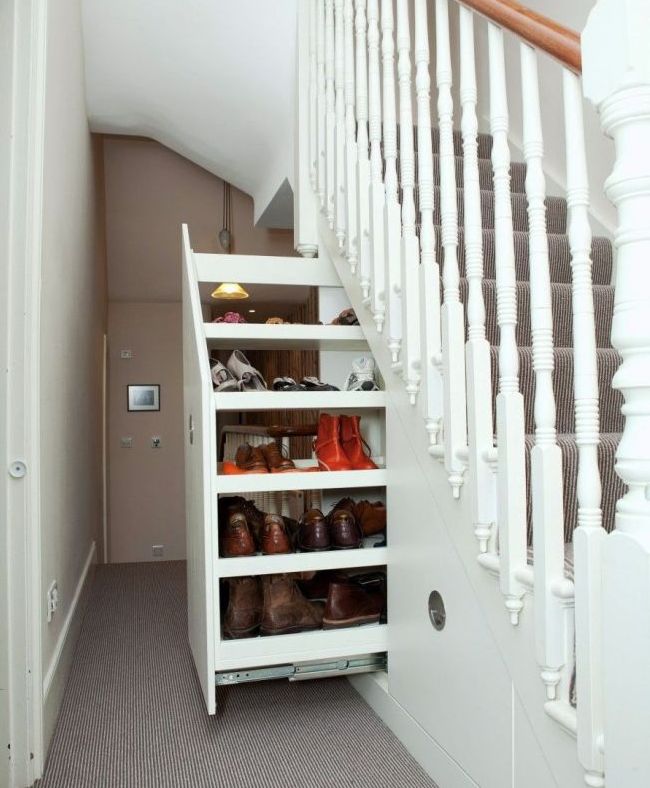
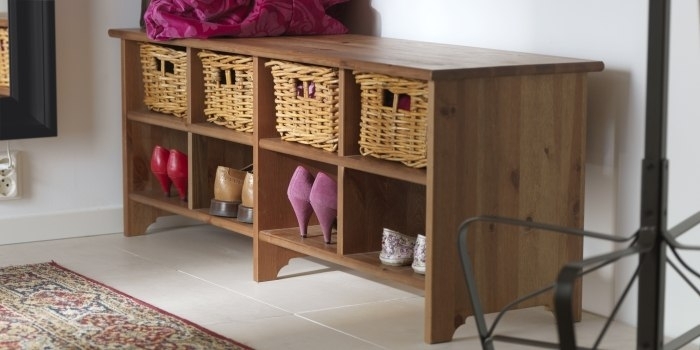
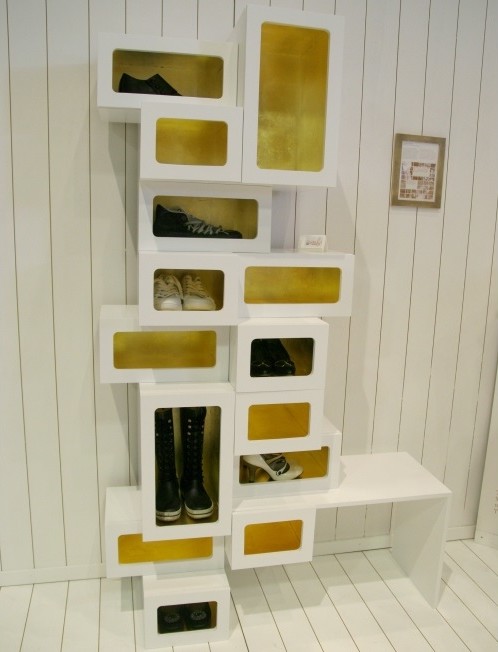

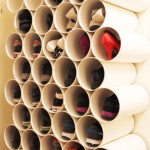


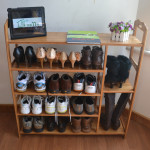


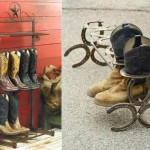
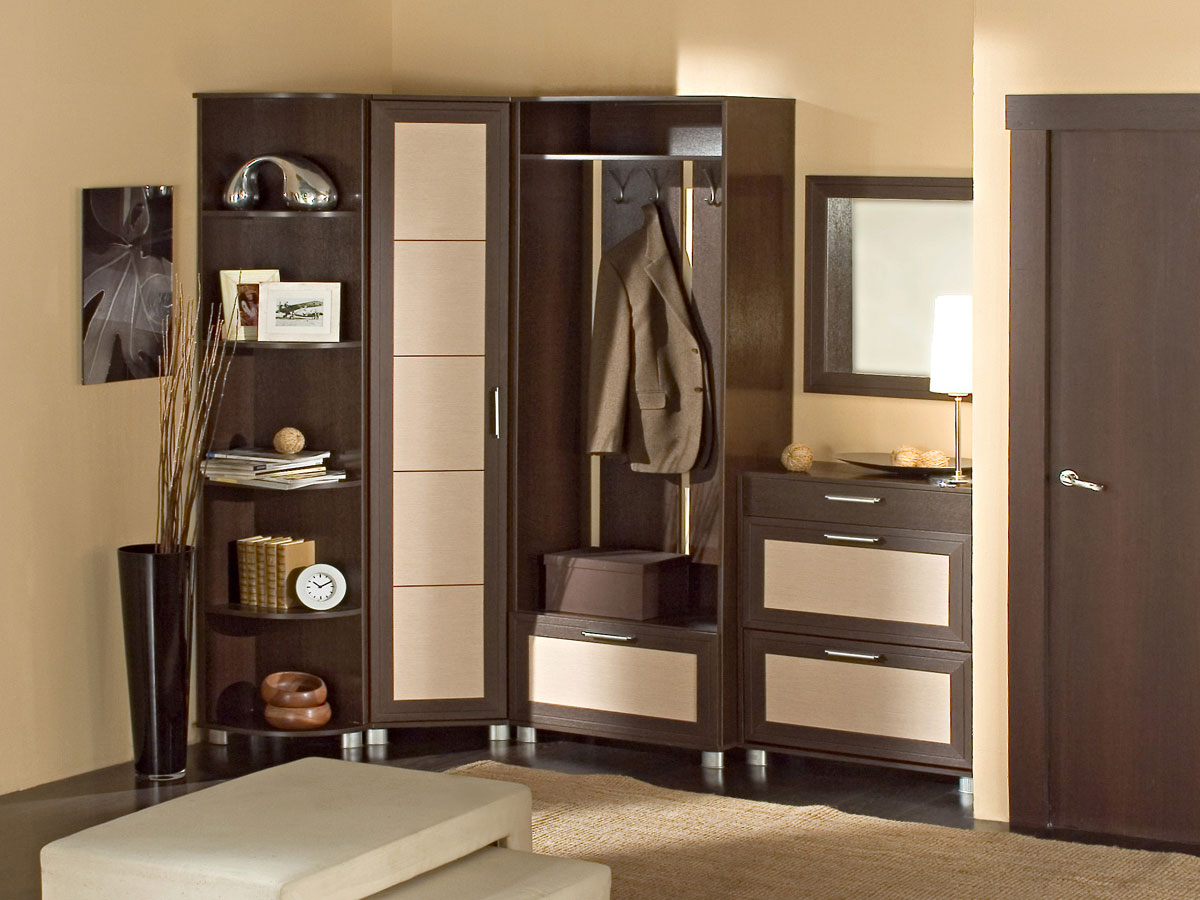
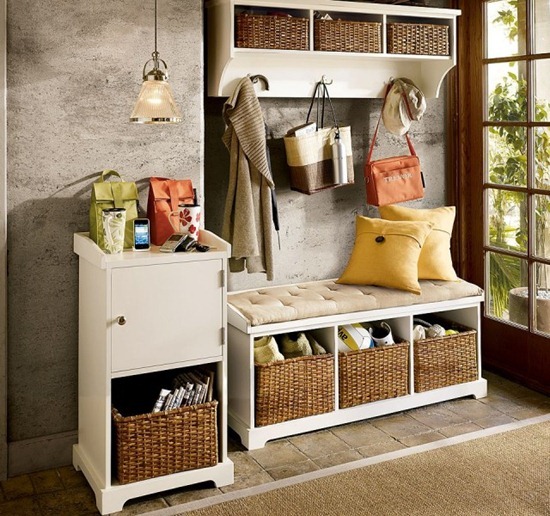
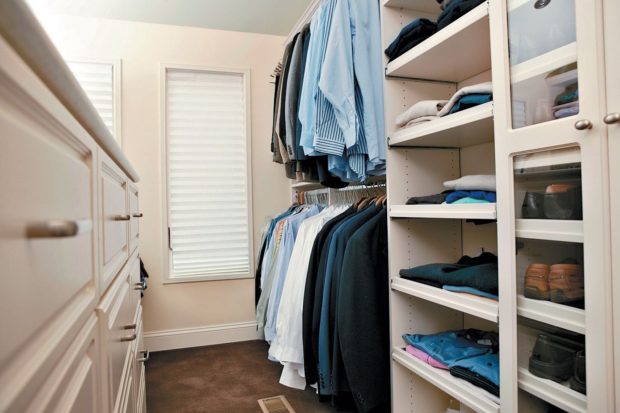
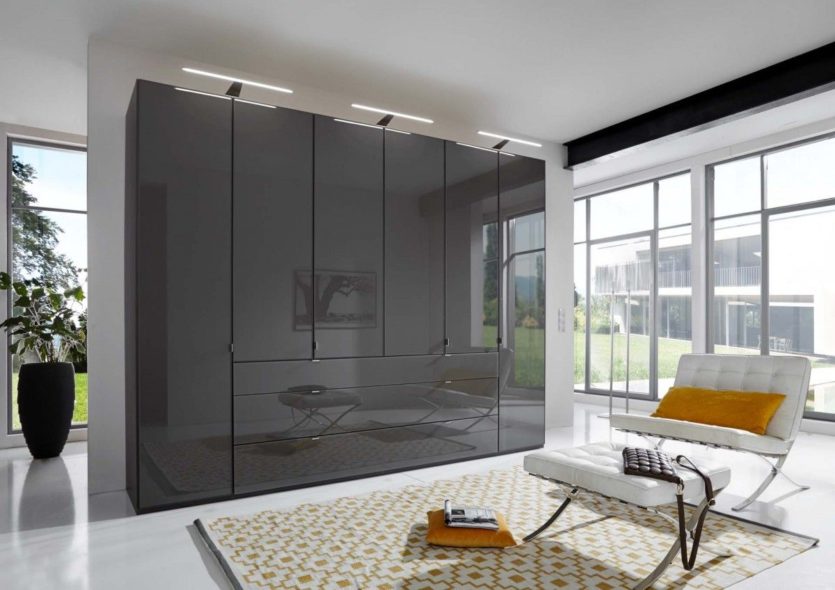

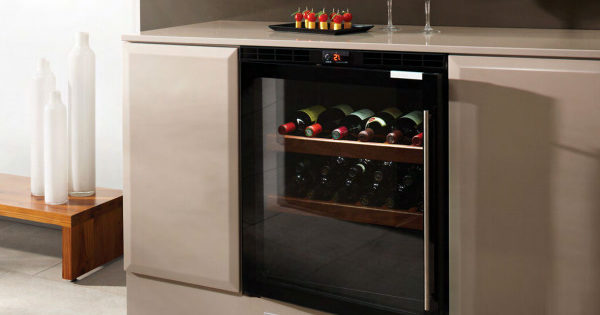

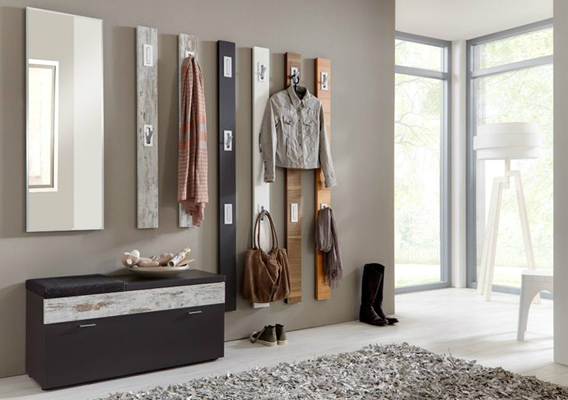


Yes, this piece of furniture is not superfluous, it creates comfort and emphasizes the overall style of the hallway, unless of course you choose a decent model ... We will take into account the material when buying
A very interesting article, did not even imagine that there are so many different shoe racks! Useful tips from the author came in handy. Thank you
It’s ridiculous. I look at the photo and understand that this is for those who are sitting at home somewhere in the south. I live in the Urals (we have autumn morning, summer afternoon, autumn / winter evening), in the morning I choose shoes: boots, half boots or shoes. I come home in the evening: in the morning the child went to school in low shoes, walked in sneakers during the day, and in the evening he meets me in rubber boots.This is where to put all these shoes in the afternoon, then somehow it is necessary to wash and dry EVERYTHING and let it air (and at our humidity the shoes may not dry until the morning) ... Otherwise, everyone writes how to store CLEAN, DRIED shoes.